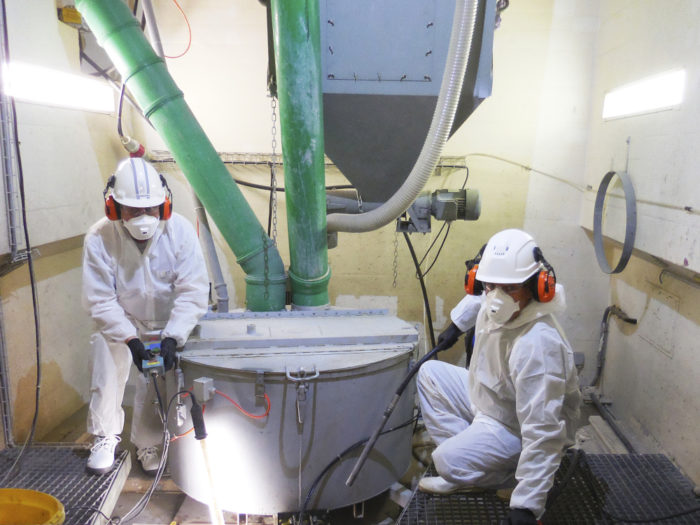Waste treatment

In Switzerland, radioactive waste is produced during power production and also, to a lesser extent, by medical applications, in industry and during research. This waste is broken down into the following categories:
- High-level radioactive waste (HLW), mainly comprising spent fuel assemblies from nuclear power plants;
- Short-lived low- and intermediate-level radioactive waste (L/ILW) consisting of consumables (gloves, clothing, tools) and, at a later stage, primarily decommissioning waste from nuclear power plants (concrete and metal); and also
- Alpha-toxic waste (ATW), which has a high content of alpha emitters (substances that emit alpha particles).
Each of these types of waste has to be treated and managed in a different way. Consequently, the radioactive waste that occurs cannot simply be moved into a deep geological repository as it is – it has to be treated beforehand.
Various treatment methods are used to convert radioactive waste into a form that allows it to be safely transported and placed in interim or final storage. This conversion process is also called “conditioning”.
The Swiss Nuclear Energy Act, NEA (Kernenergiegesetz, KEG) defines conditioning as follows:
„All the operations whereby radioactive waste is prepared for interim storage or for storage in a deep geological repository; in particular, mechanical reduction, decontamination, compaction, incineration, embedding in waste matrices, and packaging.“
Waste treatment processes are therefore physical and/or chemical methods during which the properties of the radioactive waste is changed in order to produce a suitable waste product. The purposes of waste treatment are:
- To make it possible to package the radioactive waste (e.g. mechanical disassembly);
- To separate inactive and active waste components (e.g. decontamination),
- To reduce the volume obtained (e.g. compaction, incineration of combustible substances); and
- To improve the safety-related characteristics of the waste during storage and transport (e.g. embedding in suitable waste matrices such as cement, glass or bitumen).
The conditioned waste is kept in the interim storage facility until it can be moved into a deep geological repository.

